Unlock Your Garage's Potential with Our Services
DevArt8 Construction takes care of the essential elements required for a successful garage conversion project to transform an underutilized space into an inviting and practical addition to your living area.
Reinforcing Garage Door Panels
Remove the garage door mechanism and fill the opening with brickwork or suitable construction materials. This step is crucial for structural strength and appearance, seamlessly blending the new living space with the rest of the house.
Floor Slab Level Adjustment
Level the garage floor to ensure a smooth and stable surface. Use a self-leveling compound or screed to create a flat base for further work, providing a solid foundation for your transformed space.
Floor Moisture Prevention
Damp-proof the floor by using materials like a self-leveling compound or screed. This creates a flat base for additional work, contributing to a well-prepared and reliable foundation.
Insulating Floors and Walls
To ensure a cozy interior temperature, insulate both the floor and walls. Select suitable insulation materials that align with building regulations and improve energy efficiency, taking into account the type of flooring and walls (single-skin or cavity).
Window and Door Installations
Opt for superior-quality windows and doors to enrich the renovated space’s design and functionality. Double-glazed windows enhance insulation and soundproofing, creating a comfortable and serene environment.
Primary Fixing Solutions
When installing electrical wiring plumbing and completing joinery work, it is crucial to plan the layout carefully. This ensures ample power outlets, lighting points, and plumbing connections tailored to the space’s specific needs.
Plasterboard Integration and Plaster Finish
To achieve a flawless and uniform surface for paint or wallpaper, affixing plasterboard to both walls and ceilings is recommended. Subsequently, apply a layer of plaster over the boards to achieve a refined and polished finish. Pay meticulous attention to corners and joints to ensure a seamless and aesthetically pleasing result.
Final Details
Complete your garage conversion project by installing internal doors that match the overall aesthetic, adding moldings, choosing the final floor covering, and installing lighting fixtures for functionality and ambiance. These final touches will give your newly converted space a polished appearance.
Austin Garage Conversion Design and Structural Components
Design and structural considerations in garage conversions go beyond looks. It brings your vision to life, guaranteeing safety, functionality, and aesthetic appeal. DevArt8 Construction offers this transformation, assuring that your space integrates into your home with a successful conversion.
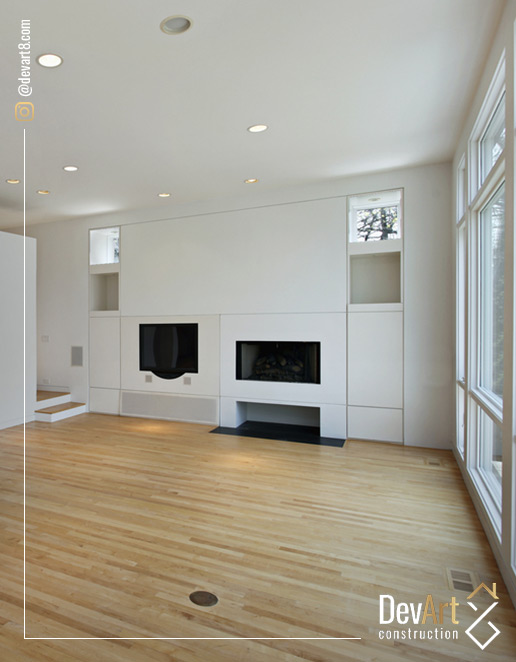
Utilizing Space Effectively
Efficient space utilization is crucial in garage conversion, ensuring a well-planned layout maximizes every square foot while seamlessly integrating with the rest of the house.
Structure Reliability
Garage conversions require careful planning and execution to ensure structural stability and create a safe and durable living space.
Optimizing Ventilation and Sunlight
Good ventilation and natural light are crucial for a successful garage conversion, creating a fresh and inviting space through ample window openings and airflow.
Insulation Planning
Insulation is crucial for garage conversions, providing temperature regulation, energy efficiency, and comfortable living space while reducing costs and improving sustainability.
Points of Access
Plan access for smooth movement, privacy, and safety when converting a garage into a living area. Consider internal door connections or separate external entrances for rental or confidentiality.
Cohesive Design and Aesthetic Appeal
Match the aesthetics and design to your home's style using similar materials and elements for a seamless and visually appealing garage conversion.
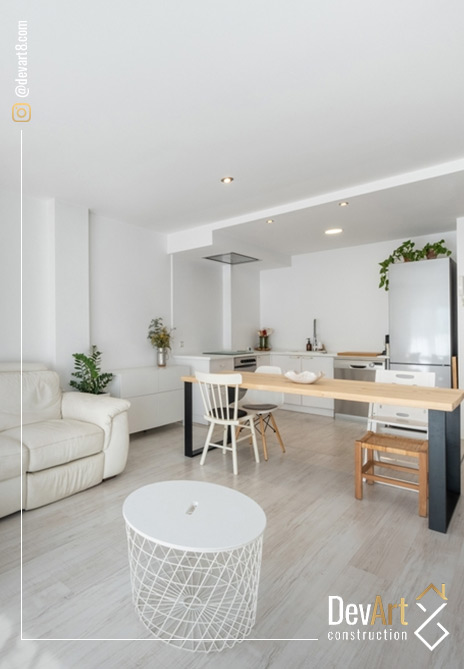
Accessibility Options
For an accessible garage conversion, incorporate wider doorways, lower countertops, and adaptable spaces to cater to individuals with physical limitations.
Ensuring Future Viability
Future-proofing garage conversions involve incorporating flexible designs and adaptable structures to accommodate evolving demands and remain functional for years efficiently.
Design Layout
Strategic layout planning is crucial for creating a practical and cozy living space in garage conversions. Optimal functionality and flow are achieved by strategically placing rooms, fixtures, and passageways.
Optimal Floor Planning
For successful garage conversions, the floor plan recommendation significantly ensures the transformed space is functional and aesthetically pleasing.
Load-Bearing Analysis
Load Bearing Consideration is crucial in garage conversions to ensure structural safety and longevity, requiring careful planning and execution to maintain the integrity of load-bearing elements.
Foundation Specifications
Foundation requirements are crucial in garage conversion, as they provide the necessary support and stability for the new space while complying with building regulations and load-bearing standards.
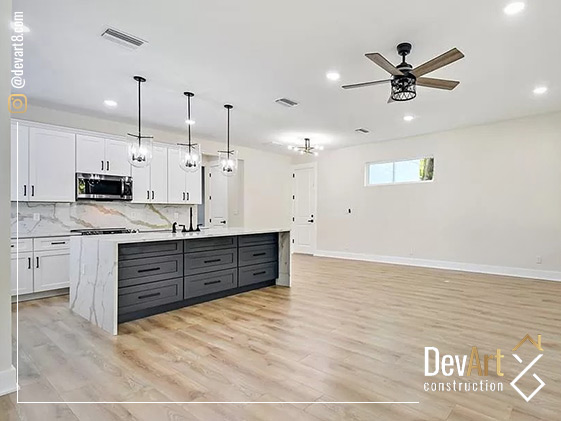
Space Ideas for Garage Transformation
Transforming your garage can be a remarkable way to optimize your home’s space and enhance its appeal. Here are some innovative ideas for garage transformations:
- Office
- Bedroom
- Studio Apartment
- Playroom/Gym
- Guest Suite
- Art Studio
- Family Room
Remember, your garage is an extension of your home. With thoughtful planning and creative design, the possibilities for transforming this often-underused space are virtually limitless.
Different Types of Garage Conversion Projects
Garage conversions can come in various forms, each catering to different needs and preferences. Some common types of garage conversion projects include:
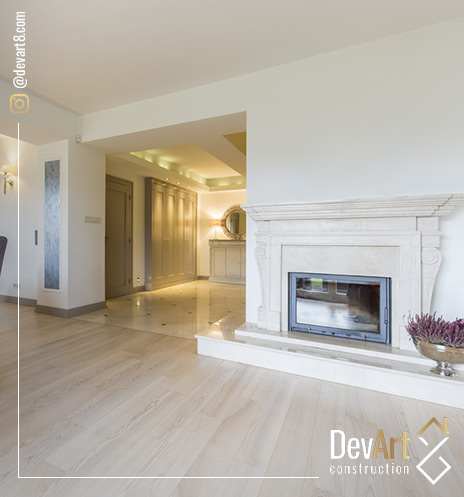
- Full Integral Single Garage Conversion: This involves converting the entire garage into a livable space, typically used for an extra bedroom, office, or living area. The transformation includes insulation, plumbing, electrical work, and finishing touches.
- Partial Garage Conversion: Only a portion of the garage is converted, while the remaining space is retained for storage or other purposes. This could be an ideal option for creating a home gym or playroom. The remaining room is separated from the converted area with a partition wall.
- Detached Garage Conversion: As the name suggests, this type involves converting a separate garage unit into a living space. This can be ideal for creating a guest suite, home office, or rental unit. It may require additional work to connect utilities and ensure compliance with building regulations.
- Double Garage Conversion: Consider converting it into two separate living spaces if you have a large garage. This is an excellent option for creating a guest suite or rental unit. It typically involves dividing the space into two rooms with its entrance and amenities.
Regardless of the type of garage conversion you opt for, it is crucial to seek guidance from a professional architect or contractor. They will ensure the project is structurally viable and complies with all relevant building codes.
Compliance with Austin's Rules for Garage Conversion
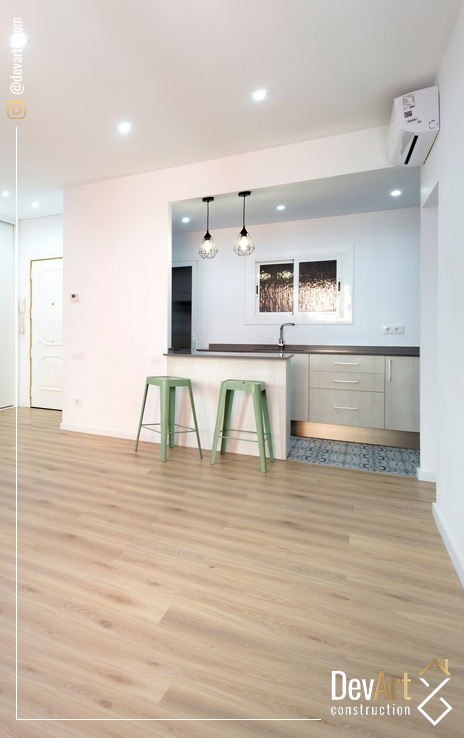
- Fire Hazard Safety: Sufficient egress windows or doors must be included in the design for emergency exits. It’s mandatory to install smoke alarms by the city’s residential code.
- Airflow Management: The city’s residential code mandates that mechanical or natural ventilation be present to provide adequate air quality.
- Thermal Efficiency: Austin’s codes stipulate that garage conversions must meet specific insulation standards to support energy efficiency. This involves adhering to guidelines for wall, roof, and floor insulation.
- Sound Conversion: Under the local regulations in Austin, garage conversions must meet specific acoustic standards. This includes ensuring proper insulation, minimizing noise transmission, and creating a comfortable and quiet living environment.
- Electric Optimization: All electrical installations in garage conversions must adhere to the city’s electrical code in Austin. This includes ensuring the installation of sufficient outlets and safe wiring systems by licensed professionals.
- Enhanced Structure: It is essential to obtain professional evaluations to ensure the existing structure can bear additional load and that changes conform to the city’s structural code.
- Slab-on-Grade Alert: This requires careful attention due to potential moisture, insulation, or radon gas issues. It’s critical to meet the city’s building code regulations to ensure safe and durable construction.
- Homeowners Association (HOA): Consider the rules their Homeowners Association (HOA) set forth for garage conversions. These rules may include specific design guidelines or restrictions that must be adhered to in addition to city regulations.
- Architectural Designs: These should meet the city’s building codes and are subject to review. It’s essential to ensure all proposed changes are accurately represented and professionally drafted to avoid project delays or penalties.
- Room Configuration: This must adhere to the city’s building codes, detailing accurate room sizes and layout. Ensuring that the plan respects zoning restrictions, includes appropriate living spaces, and meets egress requirements is pivotal.
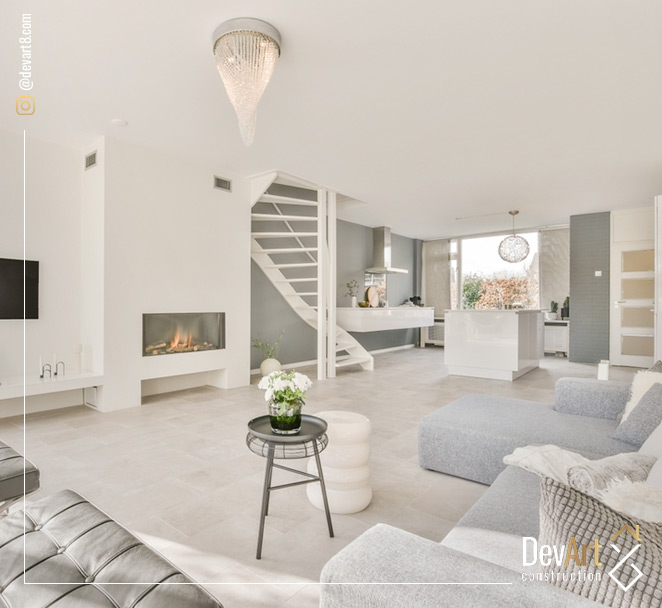
The Types of Permits Needed
Permits are legal documents that regulate and govern various activities, constructions, or changes to properties within a city. In Austin, Texas, obtaining permits is essential for any property owner or developer as it ensures safety and compliance with local regulations.
| Permit Type | Description |
|---|---|
| Building Permit | Mandatory for any significant structural modifications, including foundation work, framing, and roofing. |
| Electrical Permit | Guarantees safe electrical work, encompassing wiring, outlets, and fixture installations. |
| Structural Permit | It may be necessary if the conversion alters the structure's load-bearing capacity, like adding a second floor or removing supporting walls. |
| HOA Approval | Applicable if your property falls under a homeowners' association. Obtain their green light before pursuing permits. |
| Architectural Plan Approval | While not always mandatory, it's recommended for intricate conversions or ensuring zoning compliance. |
| Planning or Zoning Permit | Required if the conversion modifies the property's land use, footprint, or lies within a historic district. |
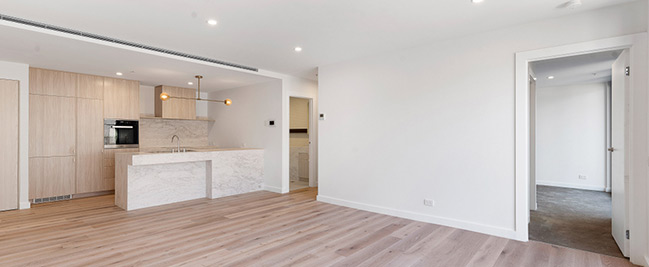
Create Extra Space with Garage Conversion in Austin
DevArt8 Construction offers complete garage conversion services. We can convert your unused garage into a living space, including bedrooms, bathrooms, offices, gyms, and even dwelling units. Converting your garage can increase your living space, generate additional income, and boost your property value. Contact us today to learn more about our services.
Factors Affecting Garage Conversion Cost in Austin
Garage conversion costs in Austin vary depending on project specifics such as intended use, location, and desired finishes. It’s best to provide a detailed project brief for an accurate cost estimate, as each conversion project has unique specifications. Critical factors influence the cost of garage conversions.
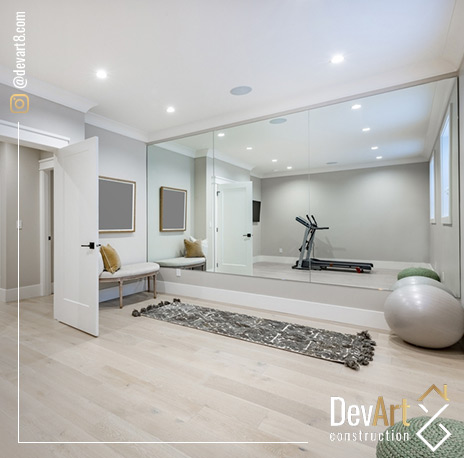
- Foundation Strengthening: Strengthening the foundation of your garage is crucial for converting it into a living space in Austin. This process’s cost depends on the existing foundation’s type and condition.
- Adjusting Room Heights: Austin’s building code sets minimum ceiling heights between 2.2m and 2.4m. Adjustments may be limited. Taller ceilings increase the price.
- Design Service Charges: It’s essential to have architectural design and planning for complex conversions or custom layouts. Consider working with Austin-based designers who are familiar with local regulations and trends.
- Permitting and Approval Costs: Permits are mandatory and can cost $1,500-$2,500, depending on the project and city regulations.
- Costs for Structural Engineering: Consulting a structural engineer is crucial for larger conversions or significant structural modifications.
- Construction Budget: Construction costs vary from $45 to $120 per square foot. Better quality materials increase costs and are often associated with wall, floor, and roof repair.
- Garage Conversion Inclusions: Personalize your space with appliances, fixtures, and built-in features. These can cost over $5,000, so consider Austin-specific trends and regulations.
- Flooring Heat Solution: Underfloor heating costs $7 to $18 per square foot installed. Weigh potential energy savings against this cost and consider Austin’s warm climate when deciding.
- Garage Style: Detached garages cost more due to additional work and materials. Before deciding, assess your budget and garage layout to understand the pros and cons.
- Insulation Grade: Insulation needs vary based on climate and room additions. Higher R-values offer more comfort and savings but cost more upfront.
FAQs
Start Your Project





